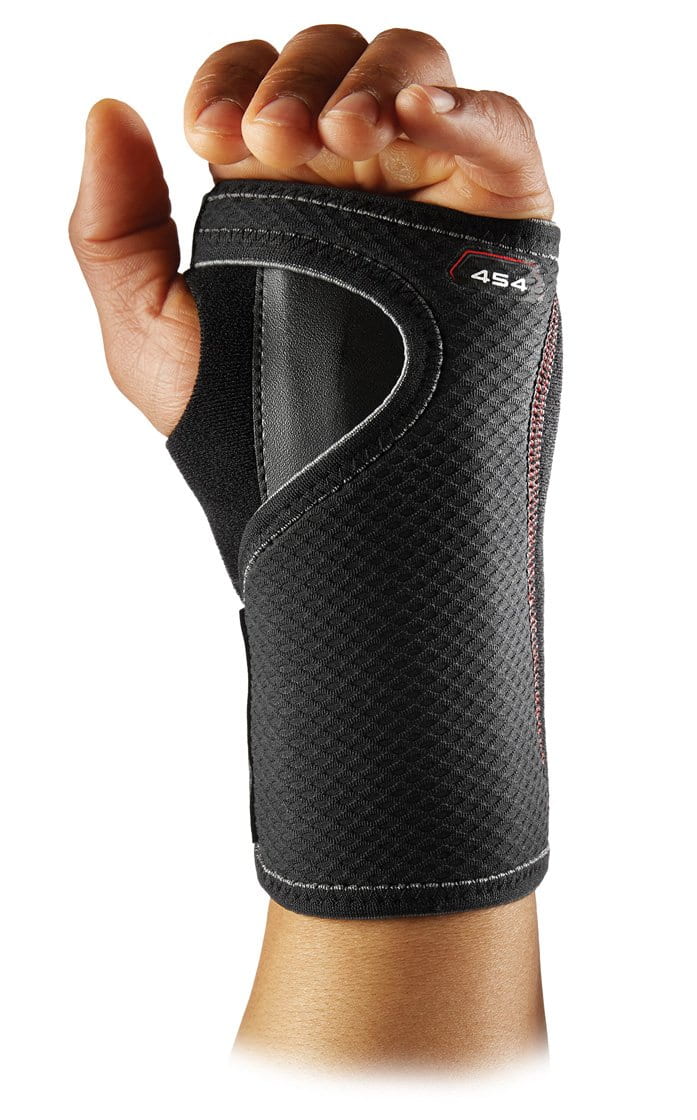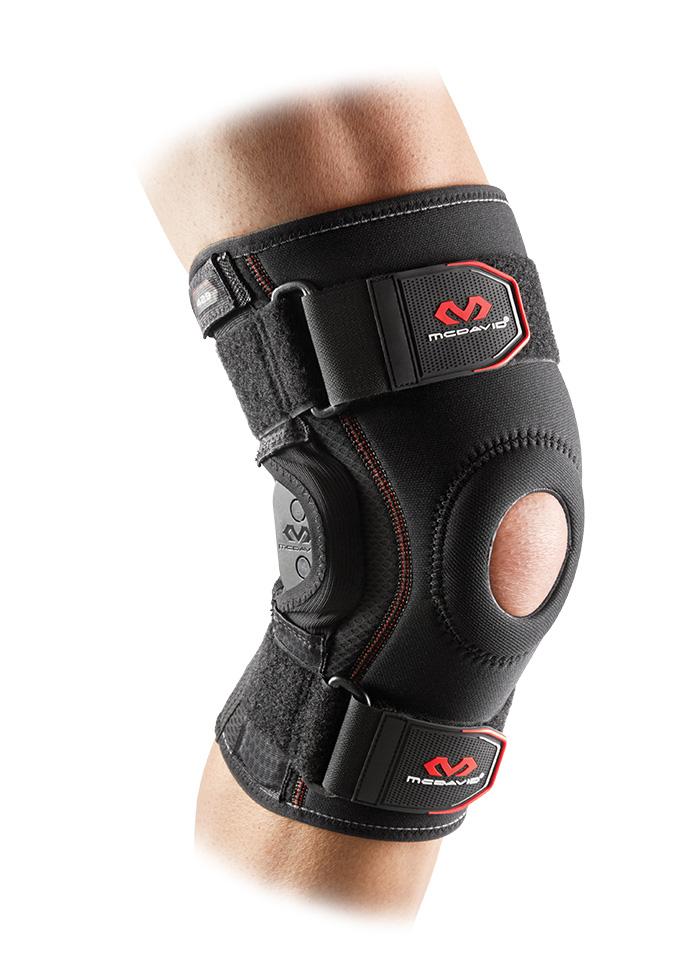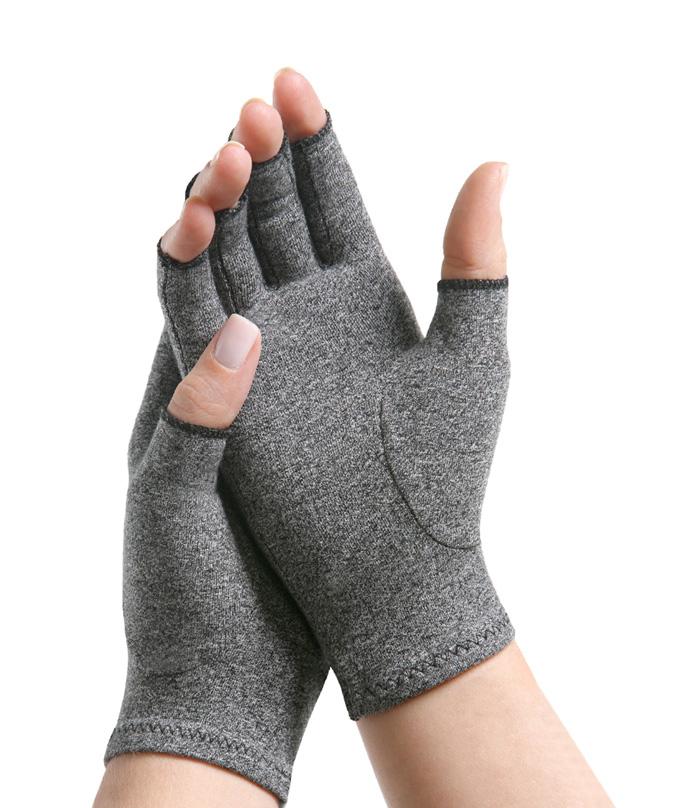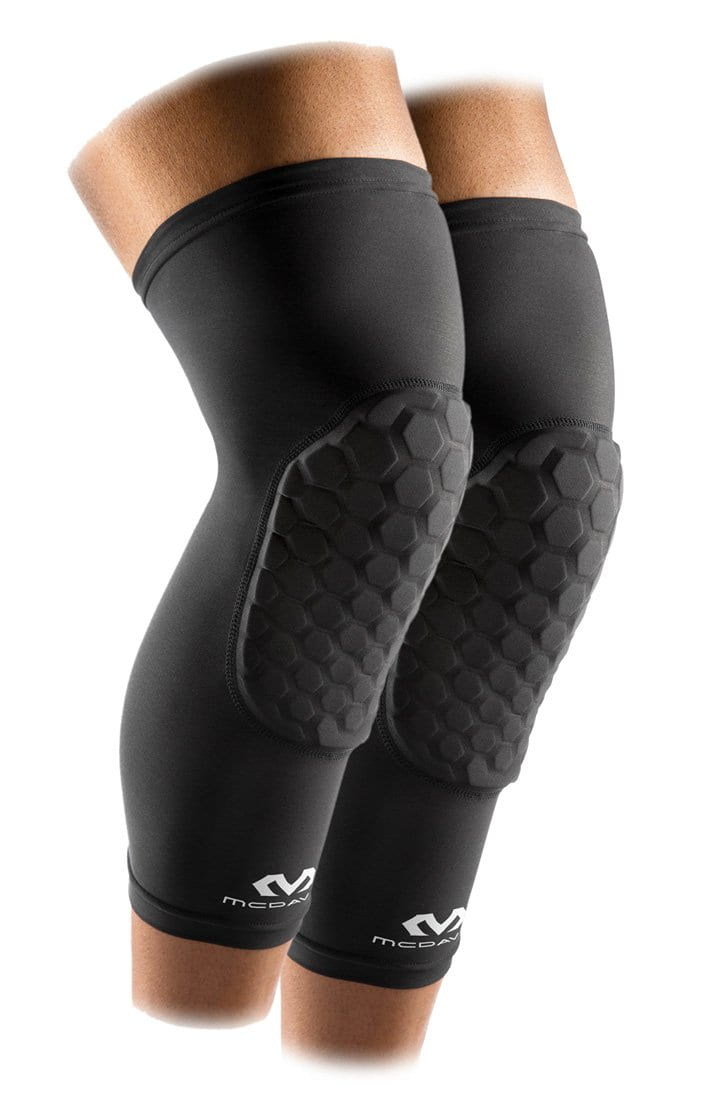Wrist Hyperextension Injury: Causes, Symptoms & Treatment Options
A wrist hyperextension injury is a wrist sprain that typically occurs when a person falls on an outstretched hand. The most common ligament of the wrist to be injured is the scapho-lunate ligament. This injury can occur from every day activities, but it is common in outdoor recreation and sports activities.
Table Of Contents:
1. What is a Wrist Hyperextension Injury?
2. Causes of a Hyperextended Wrist Injury
3. Signs and symptoms: What does it actually feel like?
4. Diagnosis, Treatment, and Recovery from Wrist Hyperextension Injury
5. What Can You Do To Help Prevent Wrist Hyperextension Injuries?
1. What is a wrist hyperextension injury?
A wrist hyperextension injury is a wrist sprain that typically occurs when a person falls on an outstretched hand. In this case, all it takes is a loss of balance and once your hand hits the ground, the force of impact bends your wrist back toward your forearm. The sprain occurs when the ligaments that attach the wrist to the bones of the hand are stretched too much causing little tears or a complete break of the ligament. (1) In the worst-case scenario, the sprain may also be accompanied by other injuries such as a scaphoid fracture or a lunate dislocation, which will need immediate medical attention.
The most common ligament of the wrist to be injured is the scapho-lunate ligament (2). This can occur from everyday activities, but it’s a common injury in outdoor recreation and sports activities.
The scapho-lunate ligament lies between two small wrist bones, namely the scaphoid bone and the lunate bone. The most important part of the ligament is on the dorsum or back of the wrist where it functions to connect these two bones. When the scapho-lunate ligament tears, it breaks the connection between the lunate and the scaphoid causing a gap to develop between them (2).

How bad is it? 3 Grades of hyperextended wrist sprains
As with every sprain, a wrist sprain is graded so that you can determine how bad it actually is, which will determine what you should do to manage it. hyperextended wrist injuries are classified as follows:
- Grade 1: Mild sprains involving stretched but not torn ligaments, without causing joint instability. This will give you mild pain and tenderness.
- Grade 2: Affected ligaments are partially torn, without joint instability. This may cause more pain and moderate loss of function of the wrist.
- Grade 3: Severe sprains occur from completely torn ligaments that result in joint instability. The ligament may tear away from the bone therefore, this requires immediate medical attention.
2. Causes of a Hyperextended Wrist Injury
Mechanism of Injury
Whilst the main cause of a Wrist Hyperextension Injury is a fall on an outstretched hand, you can also sustain one by:
- Being hit in the wrist really hard
- Exerting extreme pressure on the wrist or twisting it
Other contributing factors to the severity of the injury include the pattern of your injury, i.e. how hard you fell, the angle of force or impact on your wrist, and the length of the impact during the fall.
Who is most at risk for sustaining a wrist strain?
Although hyperextended wrist sprains can occur in anyone who takes a fall or gets hit in the wrist, they are more common in those who play sports such as (1):
- Basketball players
- Baseball players
- Volleyball players
- Gymnasts
- Divers
- Skiers, especially when they fall while still holding a pole
- Skaters
- Skateboarders
- Inline skaters
3. Signs and Symptoms Of A Hyperextended Wrist

What does a Wrist Hyperextension Injury actually feel like?
The Signs and symptoms of a wrist hyperextension sprain vary according to the factors mentioned above, and of course, the severity or grade of the sprain.
Some of these signs and symptoms include the following:
- Pain upon the onset of the injury
- Feeling a popping or tearing in the wrist on the impact of injury
- Swelling of the hand or wrist
- Tenderness in the affected region
- Bruising or discoloration
- Pain when you move your wrist
- Loss of motion or weakness in the wrist
- Loss of grip strength
- A warm feeling in the affected region
4. Diagnosis, Treatment, and Recovery from Wrist Hyperextension Injury
When Should You Seek Medical Attention?
If the acute wrist trauma is accompanied by any of the following, it is a medical emergency and you should seek medical attention immediately (2):
- Bone or joint that is clearly deformed or broken
- Severe pain and/or swelling
- Unsteady breathing or pulse
- Disorientation or confusion
- Paralysis, tingling, or numbness
Now on a lighter note, if the injury gives you mild pain and tenderness at the wrist, it is most likely a Grade 1 injury. These are fairly easy to manage with at-home techniques including the R.I.C.E. Method, over-the-counter anti-inflammatories, and preventing the wrist from any further injury. After a few days, you can return to normal activity with usually little to no pain (1).
However, if the injury is a Grade 2 sprain, i.e. giving you more than a little pain and a moderate loss of function of your wrist, then you will need to seek medical attention immediately.
Let’s say, for instance, you may not recall the fall or mechanism of injury but find that you’re developing pain at your wrist that’s getting progressively worse over time. You may find pain in the center or on the thumb side of the wrist, especially with activities such as push-ups, or other activities that load the wrist; and a decrease of function and grip strength. This could mean you have indeed sustained a wrist sprain (2).
Therefore getting an opinion from your doctor or physiotherapist is great in any case to give you peace of mind and to avoid potentially long-lasting effects from the injury that could have been avoided.
Lastly, if you are suffering from extreme pain and loss of function, you should definitely seek medical attention. This could mean you have a complete ligament tear i.e. a Grade 3 injury or worse, accompanying injuries like a wrist fracture or dislocation.
How Are Wrist Hyperextension Injuries Diagnosed?
To diagnose a Wrist Hyperextension Injury, your physician or physiotherapist will give you a thorough physical exam to determine the grade or severity, taking into account your symptoms and history (1).
After acute wrist trauma, it’s important to determine if you have sustained any fractures or dislocations as well, so he/she will decide which one of the following you need (2):
- Standard X-Rays
- Stress X-Rays
- MRI
- Arthrogram, a special type of X-ray or MRI done after a dye is injected into the wrist
If the diagnosis is still unclear, or if it is clear that more damage has occurred, an arthroscopy (looking inside the wrist with a camera) may be used to see exactly what is going on and how best to treat it. Please note, that an Arthroscopy is in itself a surgery (2).
Treatment for Hyperextended Wrist Injury
The good news is that minor to moderate wrist hyperextension injuries can heal on their own with time, adequate rest, and care. You can speed up your healing process by using the RICE Method and doing the following:
- Rest: Avoid all aggravating activities for at least 48 hours or till the pain disappears to ensure you don’t worsen the damage that’s already done
- Ice: the affected area. Apply an ice pack on your wrist for 20 to 30 minutes every 3 to 4 hours until the pain and swelling subside
- Compress the injured wrist using gauze or a bandage to immobilize it and prevent it from moving.
- Elevate: the wrist above the level of the heart during rest or as frequently as possible to stimulate blood flow and reduce inflammation
- Try over-the-counter anti-inflammatories or pain-killers such as ibuprofen to reduce pain and swelling
- Protect your injured wrist from further injury. This could mean using bandages, n over-the-counter wrist supports, or Kinesio tape to keep the wrist safe.
If these do not work and you are still struggling with pain and loss of function, please consult your physiotherapist. He/she will make use of various physiotherapy techniques such as ultrasound and prescribe a wrist brace for your injury should you need one.
- The McDavid Carpal Tunnel Wrist Brace is a great aid for keeping your injured wrist safe while you heal. Your physiotherapist will inform you of the length of time you will need to use this which could be anywhere from 2-6 weeks, depending on the injury severity and speed of healing.
Your physiotherapist will then teach you some light stretches and exercises, and advance them as you heal to:
- Eliminate pain
- Improve your wrist muscle strength
- Improve your wrist range of motion
- Improve your wrist’s ability to grip things and push
Your physiotherapist will let you know when you can get back to your chosen sporting or recreational activities.
When Will I Need Surgery for Ligament Damage in Wrist?
As mentioned above, if the X-rays and MRI are unable to provide enough information about the injury, an arthroscopy is needed. This involves surgically inserting a camera into the wrist to examine the injury thoroughly so it can be treated appropriately.
Based on what is found during the arthroscopy, surgery may include:
- Debridement: the tissues around the wrist may have sustained significant trauma and will need to be debrided (“cleaned up”).
- Ligament Repair: by tightening up the capsule tissue on the back of the wrist. This could require the use of pins to hold the ligament repair in place.
- Reduction of a Fracture or Dislocation: the damage is reduced by placing the bones correctly and using pins to hold them in place.
In the case of Ligament Repair and Fracture/Dislocation Reduction surgeries, a cast will be applied to your wrist to keep the pins in place while you heal. Your surgeon will remove the pins anywhere from 8-12 weeks or when the injury has deemed to have healed completely.
After this, you will need to consult your physiotherapist so that strengthening and range of motion exercises can begin (2).
Recovery from a Hyperextended Wrist Sprain
Recovery time depends on how serious your wrist sprain is. A wrist sprain can take anywhere from 2 - 12 weeks to heal, depending on the severity or grade of the sprain. Grade 1 sprains typically take a few days to heal, and a Grade 2 sprain may take 2 to 4 weeks. However, a Grade 3 injury is much more severe and could take as long as 3-6 months (1).
That said, every injury is different and people heal at different paces.
While you heal, you can still train the other parts of your body by adjusting your training regimen or gym routine while ensuring your affected wrist is protected. Your physiotherapist can help you with this.
You can also take up an activity that won’t irritate your wrist like stationary-biking or jogging to keep your fitness levels up.
Whatever you do, please avoid rushing to get back to your normal levels of activity or training. If you start using your wrist before it's completely healed, you could cause long-lasting damage.
Do not try to return to your old level of physical activity until:
- Your physiotherapist gives you the complete go-ahead
- You feel no pain in your wrist when it's at rest
- You can work out and grip and move objects -- like a ski pole, bat, or racket -- without pain
- Your injured wrist, as well as the hand and arm on that side, feel as strong as the uninjured wrist, hand, and arm (1)
5. What Can You Do To Help Prevent Wrist Hyperextension Injuries?
This may seem like an unnecessary point to make because most wrist hyperextension injuries occur by accident, but there are actually a lot of things you can to keep your wrists generally safe from sprains and injuries(4).
Learn the correct way to fall to avoid wrist injuries
- When you fall, your natural instinct is to put your hands out in the easiest direction to catch yourself, but this can often lead to a sprained wrist.
- Instead, try to tuck your arms close to your body and begin to roll if you start falling—this will cause you to land on the most padded part of your body while keeping your wrists and head safe.
- It’s especially important to learn how to fall safely if you’re playing sports where you’re more likely to tumble to the ground often.
Always walk carefully
- Avoid rushing anywhere unless you absolutely have to. If you walk slowly, you have more control over your feet and will be less likely to fall.
- Focus on your steps when walking through ice/snow, on a wet bathroom floor, or on uneven ground.
- Wear shoes with non-slip soles to avoid falling.
Use two hands to lift objects that are heavy
- Get into the habit of using two hands for heavy-lifting. Life is busy and stressful and we often try to carry as many things as possible when in a hurry, but this can increase your likelihood to fall.
- This is better for many of your muscles—distributing the weight between your two hands (and the rest of your body!) will not only give you a more stable grip but will put less pressure on each wrist.
- Use straps on hard-to-lift boxes, push large objects with your legs and core, and, when in doubt, always ask for a helping hand.
Wear protective gear when playing sports or exercising
- Sports like skating, skiing, and skateboarding, weightlifting, diving, and even volleyball are especially prone to wrist sprains. To help avoid them, wear things like wrist guards or protective Kinesio tape when practicing sports to keep your wrists safe.
- Your physiotherapist will be able to teach you how to apply the Kinesio tape yourself.
Put most of your weight on your fingers when balancing on your hands
- Avoid putting all your weight on the heels of your hands and this could increase your risk of developing a wrist sprain.
- Practice spreading your body weight to the pads of your fingers instead.
- This is especially important for yoga, diving, and gymnastics, where you spend a lot of time with your body weight on your hands.
Add wrist-strengthening exercises to your daily training regimen or gym routine
- Ask your physiotherapist about how you can do these easily
- Make sure you stretch your wrists and warm them up adequately before your exercise routine
- When you need to an activity that requires you to bend your wrists to 90 degrees or put your body weight on them, like a push-up, stretch them comfortably beforehand
For advice on how you can effectively stretch and strengthen your wrists, please have a look at the video below:
References:
- https://www.webmd.com/fitness-exercise/wrist-sprain#1
- https://www.sportsmd.com/sports-injuries/wrist-hand-injuries/scapholunate-ligament-tear/
- https://www.physio-pedia.com/Wrist_Sprain
- https://www.wikihow.com/Prevent-Wrist-Sprains








Best article on Google. Why? It covers the topic very thoroughly without too much information. Thankyou wishyou all luckin your healing
Leave a comment